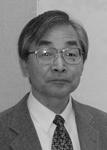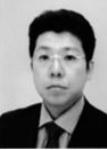Org. Synth. 2011, 88, 79-86
DOI: 10.15227/orgsyn.088.0079
SYNTHESIS OF LITHIUM 2-PYRIDYLTRIOLBORATE AND ITS CROSS-COUPLING REACTION WITH ARYL HALIDES
Submitted by Yasunori Yamamoto, Juugaku Sugai, Miho Takizawa, and Norio Miyaura
1
.
Checked by Hyung Hoon Jung and Jonathan A. Ellman.
1. Procedure
A.
Preparation of
2-Pyridyltriolborate.
A three-necked, 500-mL round-bottomed flask is fitted with a mechanical stirrer (PTFE blade, 15 × 46 mm), a Claisen adapter with an internal thermometer and pressure-equalizing addition funnel, and a reflux condenser to which a nitrogen inlet and an oil bubbler are attached, and the apparatus is flushed with nitrogen (Note 1). The flask is charged with 300 mL of THF (Note 2) and
2-bromopyridine (1) (9.7 mL, 100 mmol)
(Note 3). The mixture is cooled to -78 °C and 40.0 mL of n-butyllithium solution (2.5 M in
hexane, 100 mmol)
(Note 4) is added dropwise at a rate of 1 mL/min using the addition funnel (Note 5). The mixture is stirred for 45 min while maintaining the internal temperature at -78 °C.
Triisopropylborate (23 mL, 100 mmol)
(Note 3) is then added using the additional funnel (2 mL/min) (Note 6). The mixture is stirred for 1 h at -78 °C and then is allowed to warm to room temperature. The Claisen adapter is removed, and
1,1,1-tris(hydroxymethyl)ethane (12 g, 100 mmol)
(Note 7) is added in one portion. The neck is tightly sealed with a glass stopper. The mixture is refluxed for 0.5 h and is cooled to room temperature. The mixture is poured into 1 L of hexanes. The solid product is isolated by filtration through a 17G3 fritted-glass funnel (Iwaki Glass, Co.), washed with
hexanes (100 mL) and dried under vacuum to afford 19.8 g (93%) of 2-pyridyltriolborate (2) as a white solid, which is used in step B without purification (Note 8).
B.
Preparation of
Methyl 4-(2-pyridyl)benzoate.
A three-necked, 250-mL, round-bottomed flask, is equipped with a rubber septum, a magnetic stirring bar (PTFE oval, 16 × 33 mm), an internal thermometer and a reflux condenser to which a nitrogen inlet and an oil bubbler are attached. The flask is charged with lithium
2-pyridyltriolborate (2) (6.39 g, 30.0 mmol, 3.0 equiv),
methyl 4-bromobenzoate (3) (2.15 g, 10.0 mmol),
dichloro (1,3-bis(diphenylphosphino)propane)palladium (118 mg, 0.200 mmol, 0.02 equiv) and
copper iodide (0.190 g, 1.00 mmol, 0.1 equiv) and is flushed with nitrogen (Note 9, 10). Dry DMF (70 mL) (Note 11) is added, and the mixture is stirred for 21 h at 80 °C in an oil bath (internal temperature) and then is allowed to cool to room temperature. The mixture is transferred to a 500-mL separatory funnel charged with
ethyl acetate (80 mL) and saturated aq.
NH4Cl solution (80 mL). The organic layer is separated. The aqueous layer is extracted with
ethyl acetate (2 × 40 mL). The combined organic layer is washed with saturated aq. NaCl solution (5 × 80 mL). The organic layer is dried over anhydrous MgSO4, filtered through a 17G3 fritted-glass funnel (Iwaki Glass, Co.) and concentrated on a rotary evaporator under reduced pressure to afford crude solid product. The crude product is dissolved in 5 mL of methanol at 40 °C and is allowed to cool to -30 °C for 1 h. The resulting crystals are collected by filtration on a 17G3 fritted-glass funnel (Iwaki Glass, Co.) and washed with 10 mL of cold
methanol (1.65 g, 7.74 mmol, 77%). The mother liquor is concentrated, and the resulting solid is recrystallized from
methanol (2 mL) to yield a second crop (0.29 g, 1.4 mmol, 14%). The process is repeated to yield a third crop (0.02 g, 0.01 mmol, 1.0%). The combined crystals are dried overnight at 0.1 mmHg to give 1.96 g (92%) of
methyl 4-(2-pyridyl)benzoate
(4) as a white crystalline solid (Note 12).
2. Notes
1.
All glassware was dried in an oven at 120 °C for 1 h, assembled while hot, and allowed to cool under a stream of nitrogen.
2.
Tetrahydrofuran was passed through a column of activated alumina under nitrogen pressure immediately prior to use.
3.
2-Bromopyridine and triisopropylborate
were purchased from Sigma-Aldrich Chemical Company and used without further purification.
4.
n-Butyllithium (2.50 M in hexanes) was purchased from Sigma-Aldrich Chemical Company.
5.
Adding the butyllithium solution at an approximate rate of 1 mL/min prevents the internal temperature from rising above -75 °C.
6.
No significant increase in internal temperature was observed at an addition rate of 2.0 mL/min.
7.
1,1,1-Tris(hydroxymethyl)ethane
was purchased from Acros Organics Company and was used without further purification.
8.
The spectral data are as follows: mp >350 °C; IR 3449, 3230, 2950, 2870 cm
−1;
1H NMR
pdf (500 MHz, DMSO-
d6
) δ: 0.53 (s, 3 H), 3.67 (s, 6 H), 7.06 (td,
J = 4.5, 1.5 Hz, 1 H), 7.33 (d,
J = 8.5 Hz, 1 H), 7.51 (td,
J = 7.5, 1.5 Hz, 1 H), 8.24 (d,
J = 4.5 Hz, 1 H)
;
13C NMR
pdf (125 MHz, DMSO-
d6
) δ: 15.7, 34.4, 73.3, 120.5, 126.8, 134.1, 146.6
;
11B NMR (160 MHz, DMSO-
d6
) δ: 1.10; MS (FAB
+):
m/z (%): 213 (M
+, 6), 191 (53), 185 (100), 184 (24), 179 (6), 155 (6), 149 (18), 121 (11); HRMS (ESI):
m/z calcd. for C
10H
14BLiNO
3 [M + H]
+ 214,1227, found 214.1228.
9.
Methyl 4-bromobenzoate, triphenylphosphine
and copper iodide were purchased from Sigma-Aldrich Chemical Company and used without further purification.
10.
Dichloro(1,3-bis(diphenylphosphino)propane)palladium
was pur- chased from Sigma-Aldrich Chemical Company and used without further purification.
11.
DMF was purchased from EMD Chemicals Inc. and dried by distillation from calcium hydride under nitrogen before use.
12.
Methyl 4-(2-pyridyl)benzoate
: mp 96-97 °C; IR 3055, 2944, 1705, 1435, 1272, 1109 cm
−1;
1H NMR
pdf (400 MHz, CDCl
3) δ: 3.95 (s, 3 H), 7.29 (dd,
J = 8.8, 4.8 Hz, 1 H), 7.79 (d,
J = 4.8 Hz, 2 H), 8.07 (d,
J = 8.5 Hz, 2 H), 8.15 (d,
J = 8.5 Hz, 2 H), 8.73 (d,
J = 4.8 Hz, 1 H)
;
13C NMR
pdf (100 MHz, CDCl
3) δ: 52.2, 121.0, 122.9, 126.8, 130.0, 130.3, 136.9, 143.5, 149.9, 156.2, 166.9
; MS (EI)
m/z (%): 213 (M
+, 78), 182 (100), 154 (56), 127 (25), 77 (19); HRMS (EI): calcd. for C
13H
11NO
2 [M
+] 213.0790, found 213.0788; Anal. calcd. for C
13H
11NO
2: C, 73.23; H, 5.20; N, 6.57. Found: C, 73.09; H, 5.39; N, 6.51.
Handling and Disposal of Hazardous Chemicals
The procedures in this article are intended for use only by persons with prior training in experimental organic chemistry. All hazardous materials should be handled using the standard procedures for work with chemicals described in references such as "Prudent Practices in the Laboratory" (The National Academies Press, Washington, D.C., 2011 www.nap.edu). All chemical waste should be disposed of in accordance with local regulations. For general guidelines for the management of chemical waste, see Chapter 8 of Prudent Practices.
These procedures must be conducted at one's own risk. Organic Syntheses, Inc., its Editors, and its Board of Directors do not warrant or guarantee the safety of individuals using these procedures and hereby disclaim any liability for any injuries or damages claimed to have resulted from or related in any way to the procedures herein.
3. Discussion
Heteroaromatic biaryls are an important class of compounds due to the frequent occurrence of these fragments in natural products, pharmaceuticals, agrochemicals, and functional organic materials.
2 Cross-coupling reactions between arylboronic acids and aryl electrophiles provides simple access to such biaryls. Although cross coupling reactions are effective for a variety of organometallic reagents and electrophiles,
3 heteroaromatic boronic acids often fail to give biaryls due to the high sensitivity of the B-C bond of electron-deficient heteroaryl rings to hydrolytic B-C bond cleavage with water.
4
2-Pyridylboronic acid
is a typical example that undergoes very rapid cleavage with water. A recent advance in this field is the use of pinacol esters or diethanolamine esters of heteroaryl boronic acids.
5 The alkali metal triolborates have exceptionally high levels of stability in air and water thus allowing metal-catalyzed reactions in aqueous solvents. They also can be used in non-aqueous organic solvents such as DMF because of their reasonable solubility in organic solvents. Their high performance for bond-forming reactions have been demonstrated in palladium-catalyzed cross-coupling,
6 copper-catalyzed
N-arylation (eq 1)
7 and rhodium-catalyzed asymmetric 1,4-addition (eq 2).
8
Appendix
Chemical Abstracts Nomenclature (Collective Index Number);
(Registry Number)
2-Bromopyridine: Pyridine, 2-bromo-; (109-04-6)
Triisopropyl borate: Boric acid (H3BO3), tris(1-methylethyl)ester; (5419-55-6)
n-Butyllithium: Lithium, butyl-; (109-72-8)
1,1,1-Tris(hydroxymethyl)ethane: 1,3-Propanediol, 2-(hydroxymethyl)-2-methyl-; (77-85-0)
Lithium 2-pyridiltriolborate:Borate(1-), [2-[(hydroxy-κO)methyl]- 2-methyl-1,3-propanediolato(3-)-κO1,κO3] -2-pyridinyl-, lithium (1:1), (T-4)-; (1014717-10-2)
Methyl 4-bromobenzoate: Benzoic acid, 4-bromo-, methyl ester; (619-42-1)
Methyl 4-(2-pyridyl)benzoate: Benzoic acid, 4-(2-pyridinyl)-, methyl ester; (98061-21-3)
Dichloro[1,3-bis(diphenylphosphino)propane]palladium: Palladium, dichloro[1,1'-(1,3-propanediyl)bis[1,1-diphenylphosphine-κP]]-, (SP-4-2)- (59831-02-6)
Triphenylphosphine: Phosphine, triphenyl-; (603-35-0)
Copper iodide; (1335-2
3-5)
 |
Norio Miyaura was born in Hokkaido in 1946. He received his B. Eng. and Dr. Eng. from Hokkaido University. He became a Research Associate and an Associate Professor of the A. Suzuki research group, and then was promoted to Professor of the same group in 1994. In 1981, he joined the J. K. Kochi group at Indiana University as a postdoctoral fellow to study the epoxidation of alkenes catalyzed by salen-oxometal complexes. His current interests are mainly in the field of metal-catalyzed reactions of organoboron compounds, with an emphasis on applications to organic synthesis, for example, cross-coupling reactions, conjugate addition reactions, and addition and coupling reactions of diborons. |
 |
Yasunori Yamamoto was born in Hokkaido, Japan in 1968. He received his B. Eng. (1991) and M. Eng. (1993) from Hokkaido University under the direction of Professor Akira Suzuki. He worked at Mitsubishi Chemical Corporation as Researcher from 1993 to 1995. In 1995, he then moved to Hokkaido University as an Assistant Professor of the N. Miyaura research group and received his Ph. D degree in 2003 from Hokkaido University. His research interest is organic synthesis via metal-catalyzed reactions of organoboron compounds. |
 |
Juugaku Sugai was born in Sendai, Japan in 1985. He received his B. Eng. (2008) from Hokkaido University under the direction of Professor Norio Miyaura. Presently, he is pursuing his M.S. degree in the same group. The focus of his research is the cross-coupling reaction of triolborates. |
 |
Miho Takizawa was born in Niigata, Japan in 1984. She received her B. Eng. (2007) and M. Eng. (2009) from Hokkaido University under the direction of Professor Norio Miyaura. Currently she is working for Mitsubishi Chemical Corporation. |
 |
Hyung Hoon Jung was born in 1971 in Mokpo, Korea. After finishing military service, he studied organic chemistry at Hanyang University in Seoul, Korea where he completed his M.S. degree in Organic Chemistry under the supervision of Professor Chang Ho Oh. After working on palladium-catalyzed additions of organoboronic acids to alkynes as an assistant researcher at Hanyang University, he joined Professor Floreancig's group at the University of Pittsburgh in 2004. As a graduate student, he developed a gold-catalyzed synthesis of heterocycles and completed the syntheses of two natural products, (+)-andrachcinidine and (+)-leucascandrolide A. Currently, he is working as a postdoctoral fellow in Professor Ellman's group at Yale University on the development of rhodium-catalyzed additions of arylboronic acids to pharmaceutically interesting ketimines. |
Copyright © 1921-, Organic Syntheses, Inc. All Rights Reserved